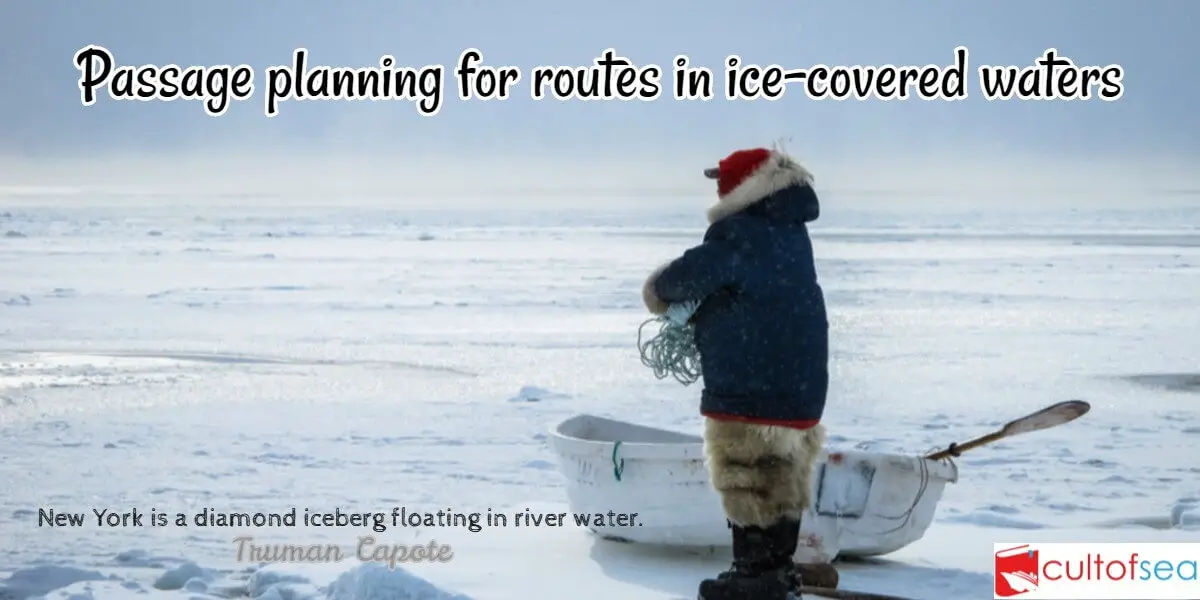When the Master gets the nomination of the next port, he communicates this information to the navigating officer of the ship. On hearing this, how the navigating officer proceeds to plan the passage, is precisely the coverage of this article.Research into shipping casualties has shown that the most important contributing factor is that of human error, 85% to be more precise.Among the recommendations for improving this situation is one for passage planning. A good passage planning means taking the vessel from A to B in the safest and shortest way. The concept of passage planning is not … [Read more...]
Passage Planning in or near ice limit
Passage planning for routes in ice-covered waters is based on standard navigational principles for passage planning(International Maritime Organization Resolution A. 893(21) adopted on 25 November 1999, Guidelines For Voyage Planning.Passage planning takes place in two phases:Strategic, when in port or in open water Tactical, when near or in ice-covered watersStrategic Phase Appraisal The procedure involves the use of all information sources used in open water passage planning, plus any others that can be obtained to give a complete picture of the ice conditions possible. … [Read more...]

